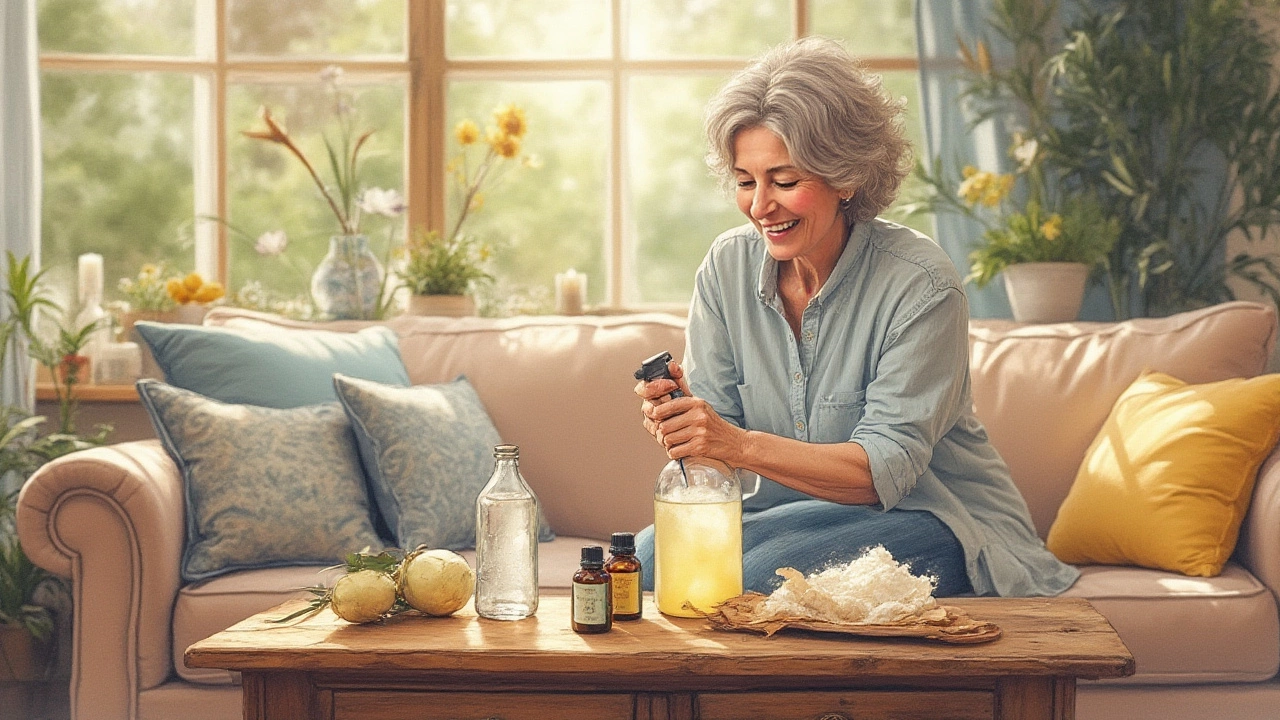Homemade Upholstery Cleaner: Simple DIY Tips for Fresh Furniture
Got a couch or armchair that looks tired but you don’t want to splash chemicals all over it? A homemade upholstery cleaner can bring new life to fabrics without harsh fumes or pricey products. Below you’ll find everything you need, plus a clear walk‑through that works on most sofas, chairs, and even car seats.
What You Need
- 1 cup warm water
- 1/2 cup white vinegar
- 2‑3 teaspoons baking soda
- 1‑2 drops mild dish soap (liquid)
- Optional: a few drops of your favorite essential oil (lemon or lavender) for scent
- Two clean spray bottles (one for the solution, one for plain water)
- Soft white microfiber cloths or a clean sponge
These ingredients are pantry‑friendly, biodegradable, and safe for most fabrics. Always keep a small dish of water handy for rinsing the cloth.
Step‑by‑Step Cleaning Guide
1. Test a hidden spot. Spray a tiny amount of the mix on a concealed area, wait 5 minutes, and feel for any stiffness or color change. If it looks good, you’re ready to go.
2. Mix the solution. In one bottle, combine warm water, vinegar, baking soda, and dish soap. The soda will fizz a bit—this is normal and helps lift grime.
3. Lightly mist the fabric. Hold the bottle about 12‑18 inches away and spray until the surface is damp, not soaking. Too much liquid can seep into the padding and cause mold.
4. Gently rub. Using a microfiber cloth, work in small circles. For stubborn spots, let the solution sit for a minute before wiping. Avoid scrubbing hard; you don’t want to wear out the fibers.
5. Rinse with plain water. Switch to the second spray bottle with clean water and lightly mist the area to remove any residue. Follow with a dry cloth to blot excess moisture.
6. Air‑dry. Let the upholstery dry completely before using it again. A fan or open windows speeds up the process.
For delicate fabrics like silk or velvet, replace vinegar with a mild fabric conditioner and skip the baking soda. Always read the care label; some materials require professional cleaning.
Extra tips:
- Work from the top of the couch down to avoid dripping on already‑cleaned areas.
- For pet stains, add a teaspoon of hydrogen peroxide to the mix (test first).
- Refresh the scent every few weeks by adding a few drops of essential oil to the spray bottle.
That’s it—no fancy equipment, no chemical smell, just a clean sofa that feels fresh. Keep this recipe in your cleaning cupboard and you’ll never need to run to the store for a pricey upholstery spray again.

Best DIY Upholstery Cleaner: Proven Recipes and Tips for Spotless Results
Dig into the top homemade upholstery cleaners, pro cleaning hacks, and the real science behind stain removal. DIY tricks for safe, fresh, and spotless furniture.
Read More